fragments of the jungle (2023)
Fragments of the Jungle constitutes a process of micro-studies from the arts and sciences regarding the speculative reconstruction of a set of lost worldviews of the Amazon rainforest that have left traces of spatial transformation and their relationship with nature.
Starting from the massive deforestation that the Amazon rainforest has suffered during the last century as a triumphant narrative of Western power, basic geometric spatial formations began to be sighted around the Acre region of Brazil. These so-called geoglyphs, which could be termed as “architectures” of the jungle, show that the civilizations of the Amazon were capable of large-scale spatial transformations, as historically denied.
To date, there is no certainty about who inhabited this place or what the reason was for building these formations, nor whether these are structures per se; however, the findings themselves show that it is not merely an arbitrary form, there is a specific worldview contained in the morphology of these designs by having been immersed in other relationships with the jungle. What is evident is an intervention in the landscape without being a transgression of the landscape.
It is a biodesign of an ancestral Latin American thought. Thinking about the possibility of reconstructing today the functions, identities, and cosmogonies of these formations enables a sensitive approach from imagination and speculative thinking.
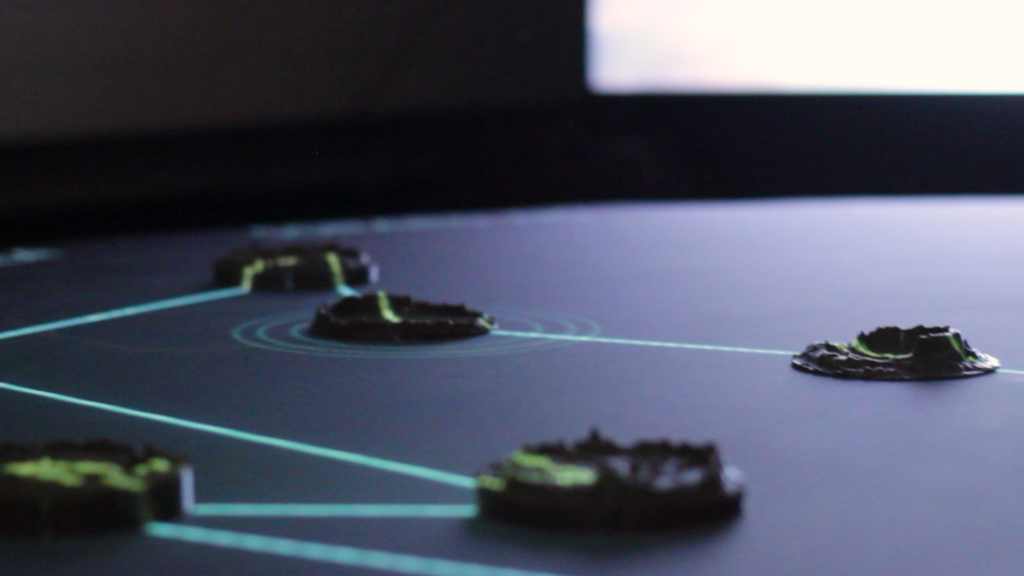
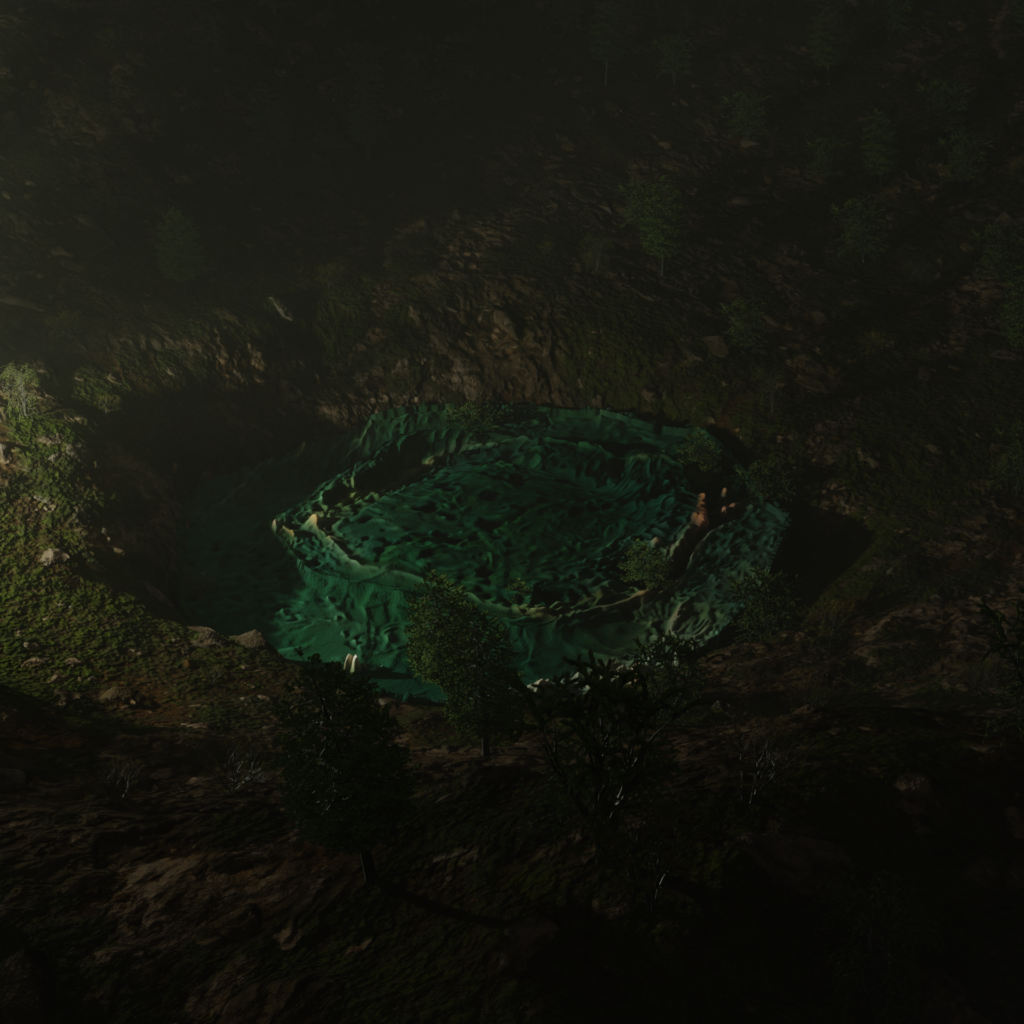
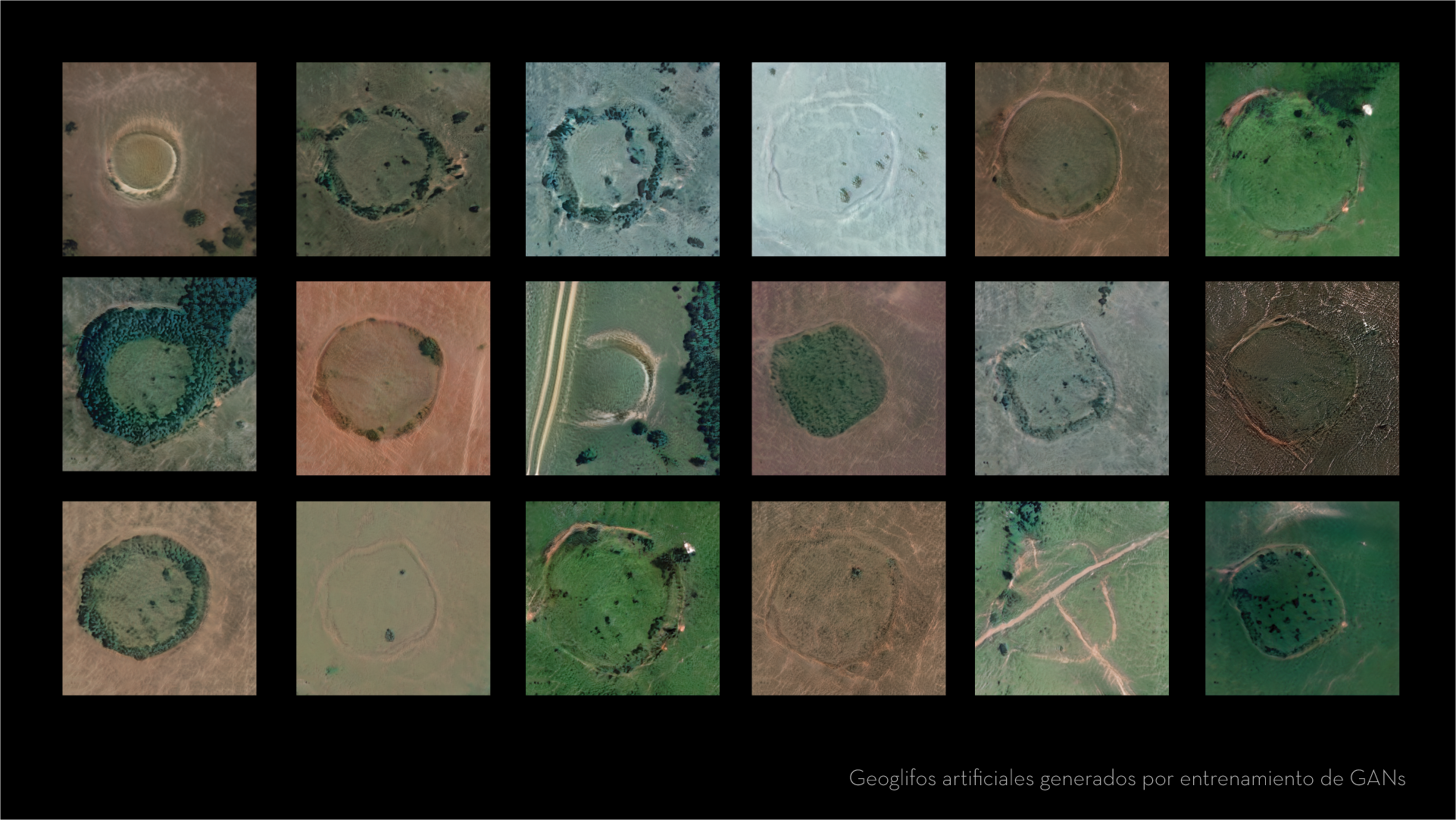
What would have happened if these glyphs had continued their course? And if they represent a worldview, what was it like? It is not known whether these glyphs were used for ritual practices or what their function was. It is not necessary to assign a specific function, but it is possible to imagine the feel-think of those who inhabited and coexisted with these spaces: there is a power of the sacred that can be expressed in the design of these forms.
The political intention behind these designs is explored in this project using digital search methodologies, the collection of satellite images, and processes that incorporate artificial intelligence and volumetric data visualization, for the construction of new geoglyphs based on the learning of the original designs. Part of the purpose of this exploration is to conduct a backward review, a “genealogy of forms,” thinking about the unfolding of possible continuities of these worldviews. For this, we can imagine the fiction of a past as distant as the farthest future we can conceive.
What if the geoglyphs speak to us of the future? Already in Amerindian thought, time functioned in cycles, where once completed, it returned to the same point. The eternal return.
Thus, when we contrast this with the idea of Western architecture, we can think of contrasts that reside not only in the morphological but also in the spiritual-immaterial, in worldviews. How could we reinsert this type of architecture and also these habits of being in space in a different way? How can we integrate these worldviews into more contemporary spaces?
The project is presented in an installative version consisting of a screen with digital volumetric reconstruction visualizations, based on learning patterns of the forms found in the Amazon rainforest. As well as the assembly of a constellative map created from global positioning locations where artificially designed sculptural objects, produced using digital fabrication methods, are inserted.
For more information about the project, visit: Fragments of the Jungle – Between Two Times
Project presented in the “Future Ancestors” exhibition at the Ars Electronica Festival 2023.
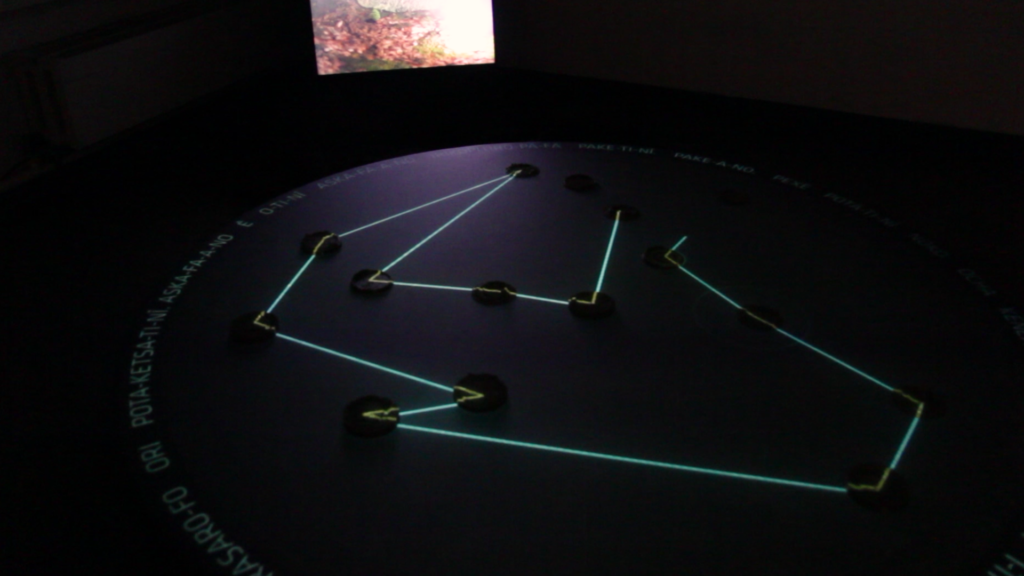

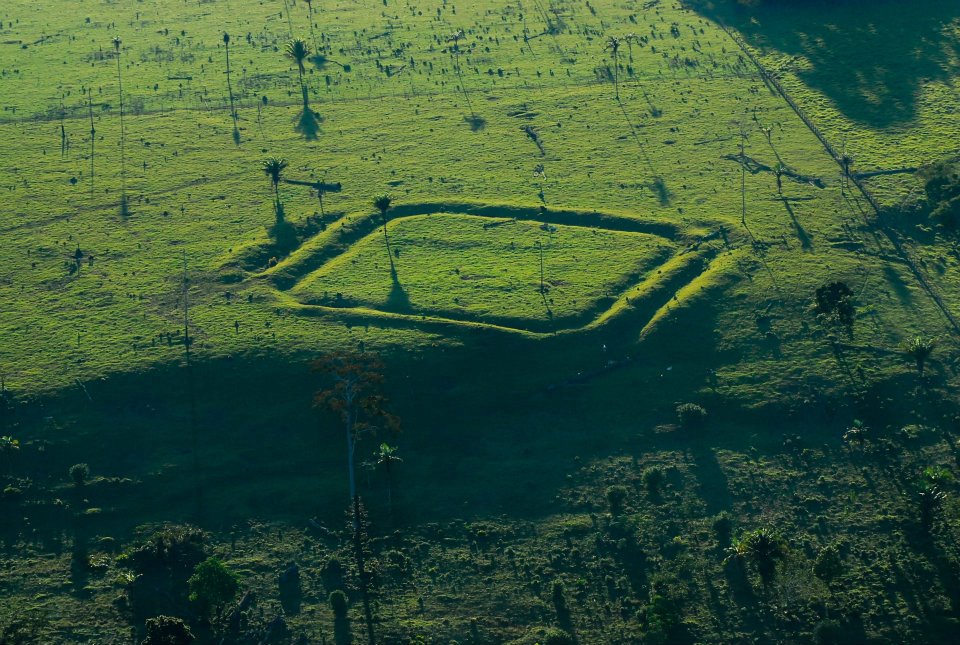
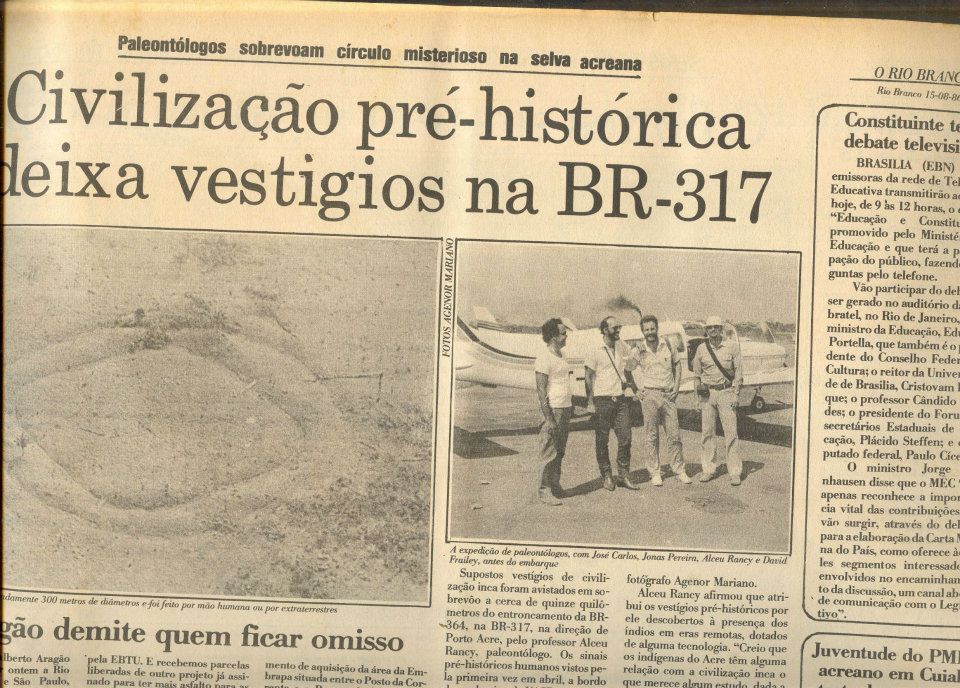
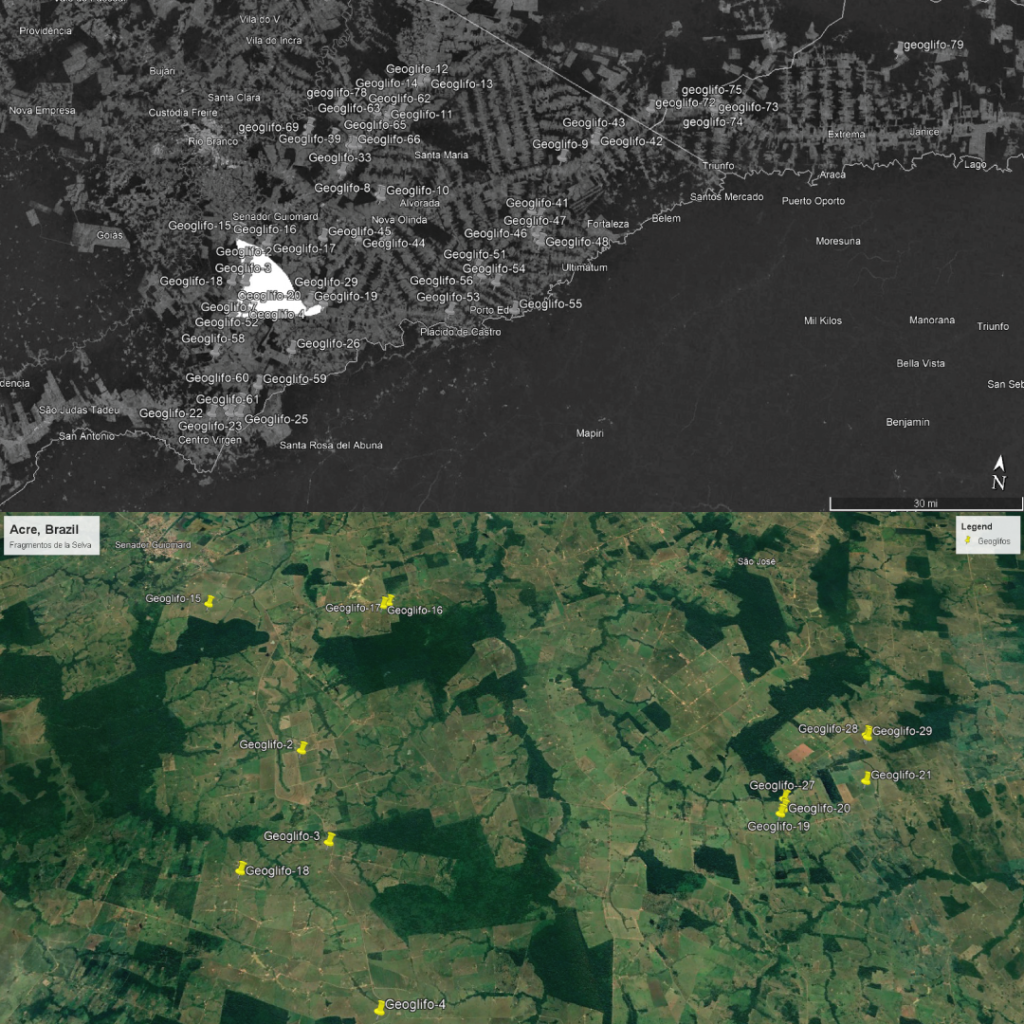
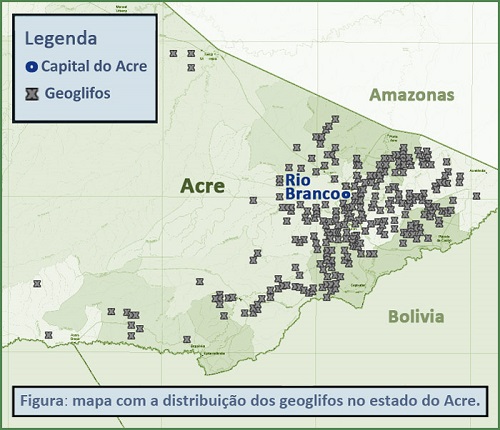
Credits:
Year: 2023
Curator: (PRISMA) Jazmín Adler, Valentina Serrati, Monica Bate
Technical Assistance: Cristóbal Parra, Julia Rossetti, Mel Izanami, Gabriela Munguía.
Photo/Video: Cristóbal Parra